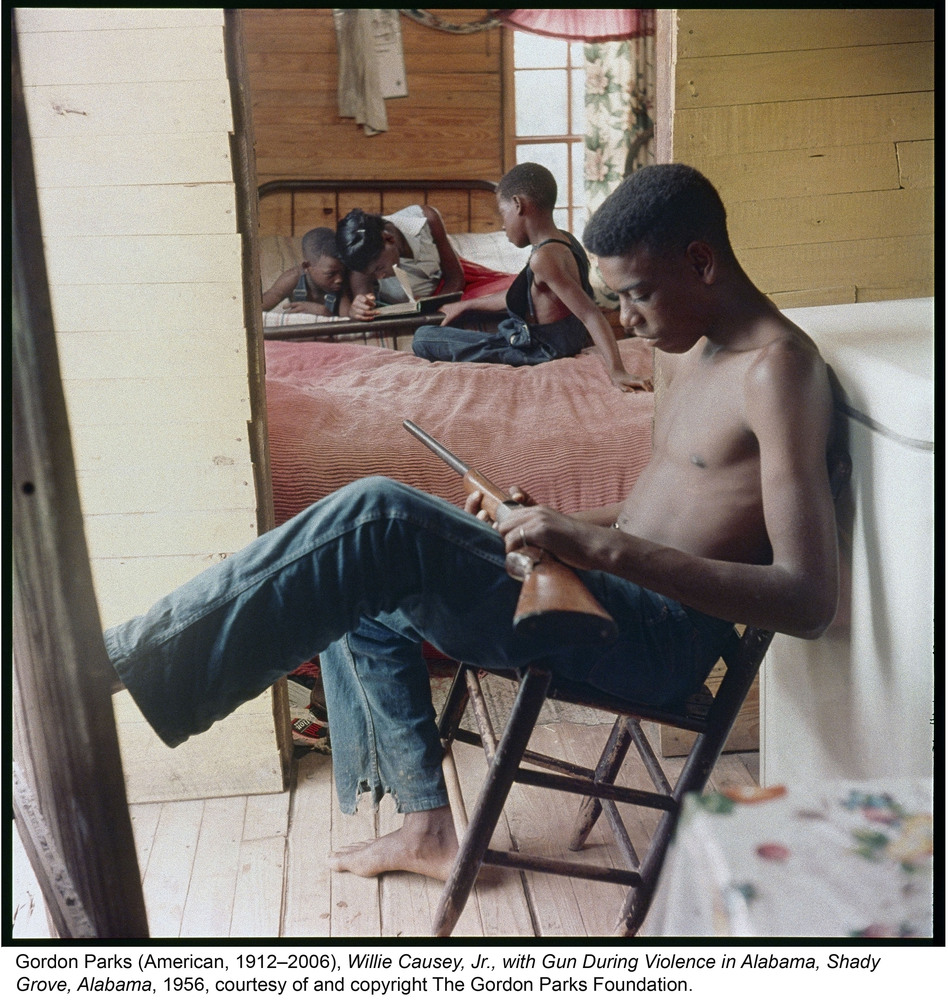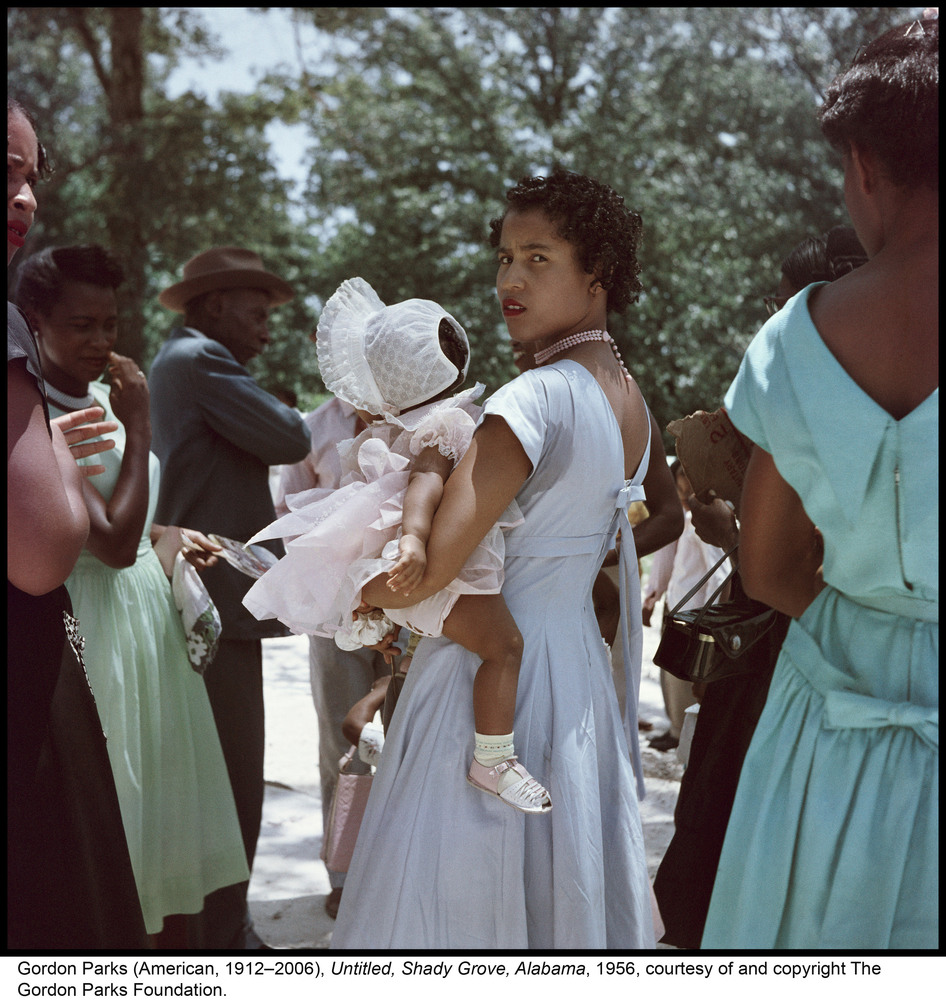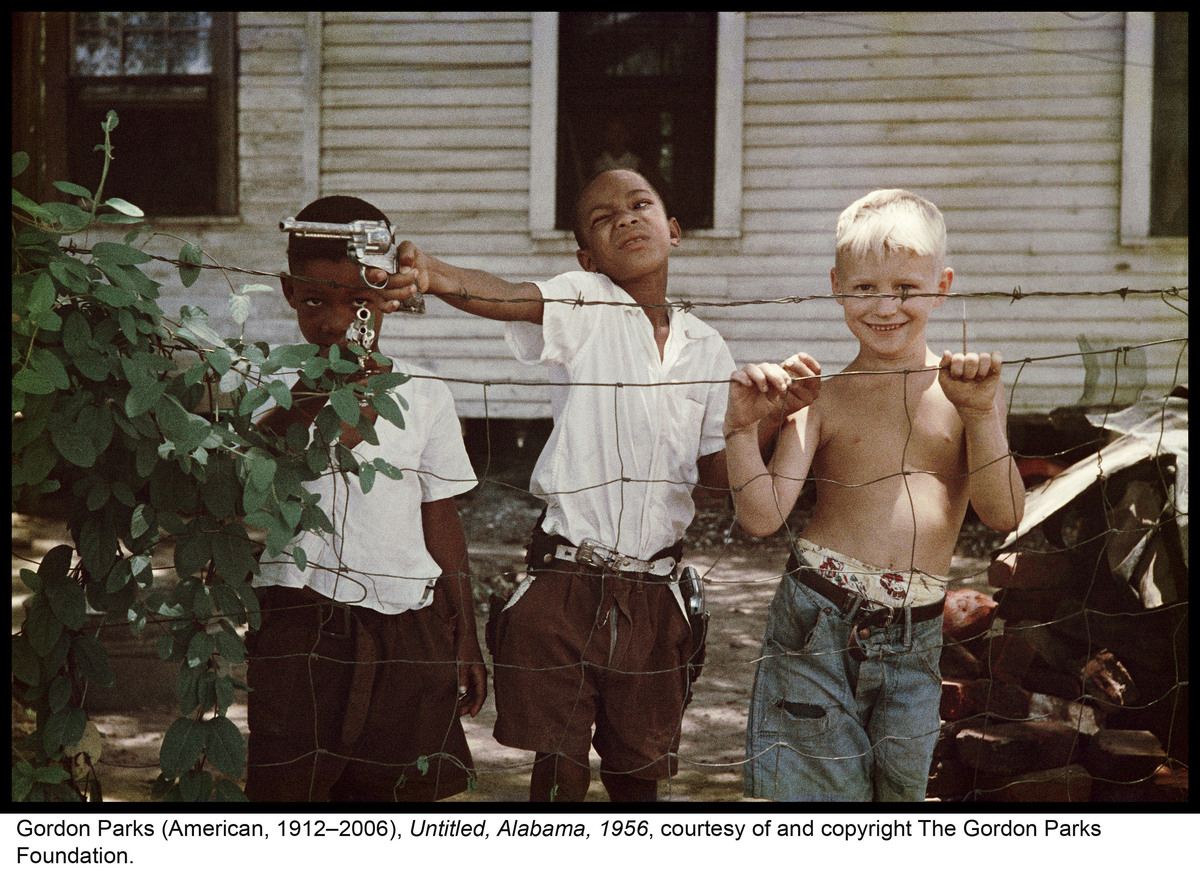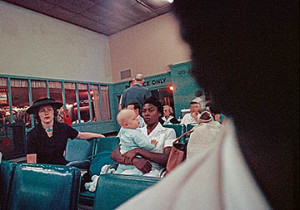
Gordon Parks in High Museum Atlanta from November 15 until June 7 2015.
Airline Terminal, 1956.
About:
The High Museum of Art will present rarely seen photographs by trailblazing African American artist and filmmaker Gordon Parks (1912-2006) in this exhibition, presented in collaboration with The Gordon Parks Foundation. The exhibition features more than 40 of Parks’ color prints – most on view for the first time in over half a century – created for a powerful and influential 1950s Life magazine article documenting the lives of an extended African-American family in segregated Alabama. The series represents one of Parks’ earliest social documentary studies on color film. Coinciding with Gordon Parks: Segregation Story, the High will acquire 12 of the color prints featured in the exhibition, supplementing the two Parks works – both gelatin silver prints – already owned by the High. These works will augment the Museum’s extensive collection of Civil Rights era photography, one of the most significant in the nation.
 Department Store, Mobel, Alabama, 1956.
Department Store, Mobel, Alabama, 1956.
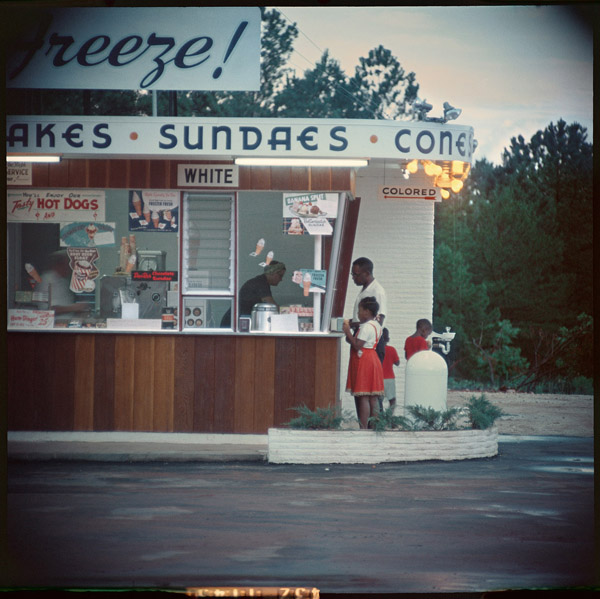 Untitled, Shady Grove, Alabama, 1956.
Untitled, Shady Grove, Alabama, 1956.
Following the publication of the Life article, many of the photos Parks shot for the essay were stored away and forgotten for more than 50 years, presumed lost until they were rediscovered in 2012 (six years after Parks’ death). Though a small selection of these images has been previously exhibited, the High’s presentation brings to light a significant number that have never before been displayed publicly. The images provide a unique perspective on one of America’s most controversial periods. Rather than capturing momentous scenes of the struggle for civil rights, Parks portrayed a family going about daily life in unjust circumstances. Parks believed empathy to be vital to the undoing of racial prejudice. His corresponding approach to the Life project eschewed the journalistic norms of the day and represented an important chapter in Parks’ career-long endeavor to use the camera as a “weapon of choice” for social change. The images he created offered a deeper look at life in the Jim Crow South, transcending stereotypes to reveal a common humanity.
Courtesy/copyright: The Gordon Parks Foundation.

